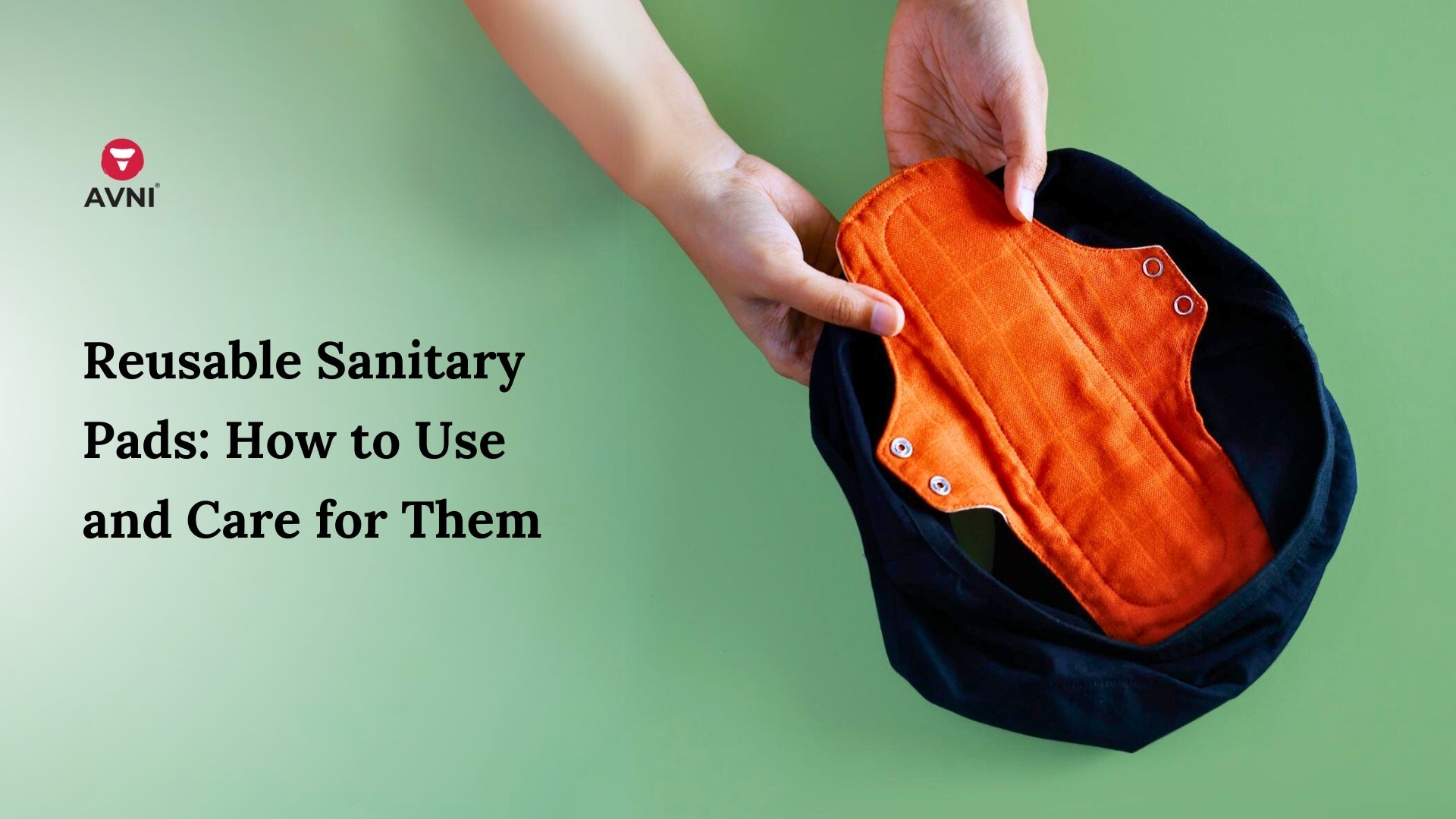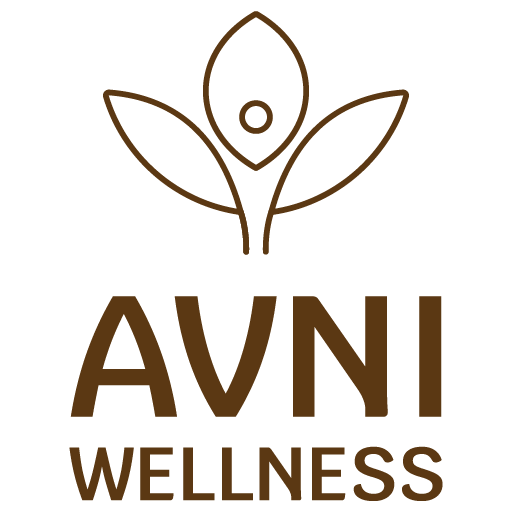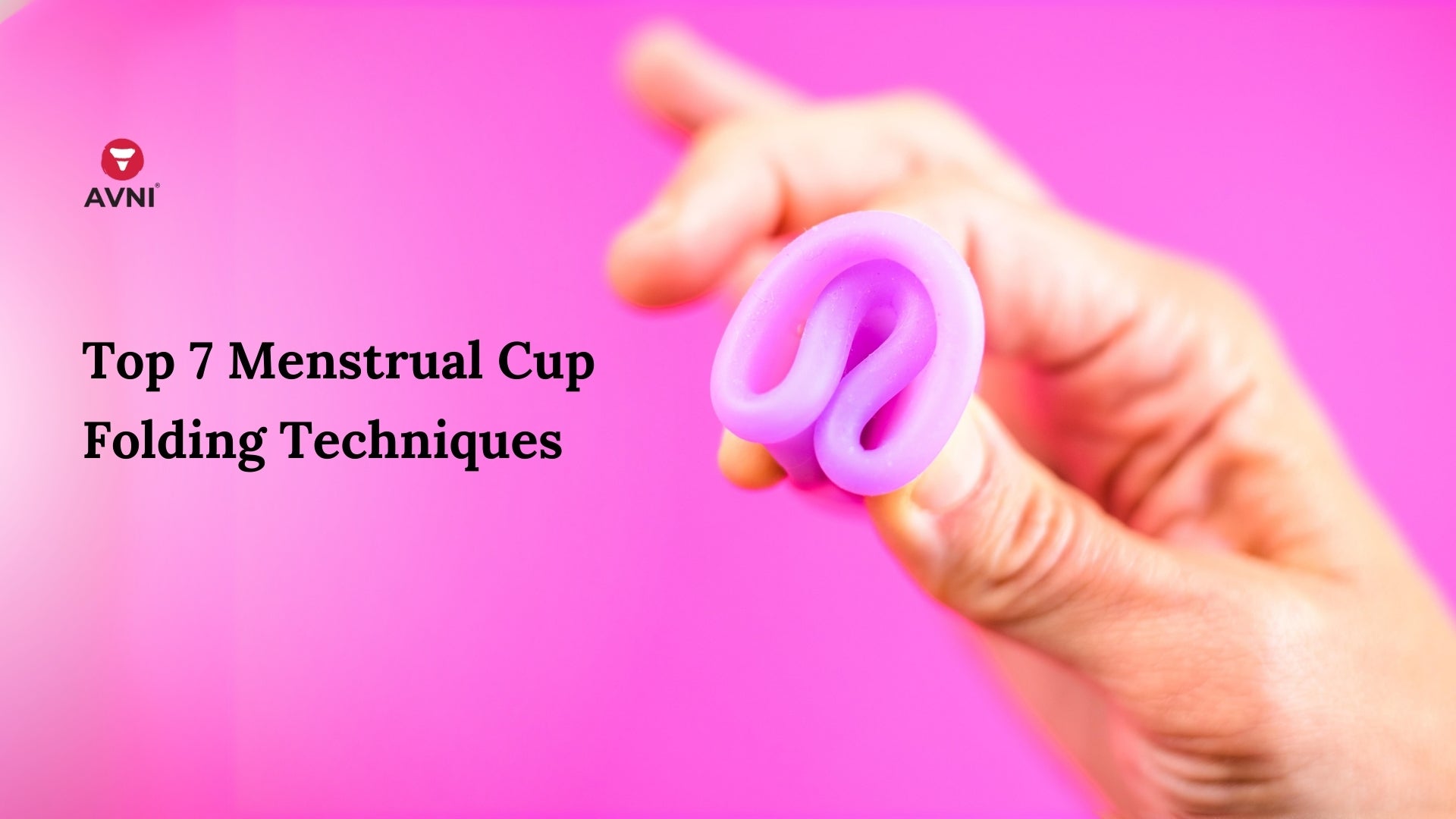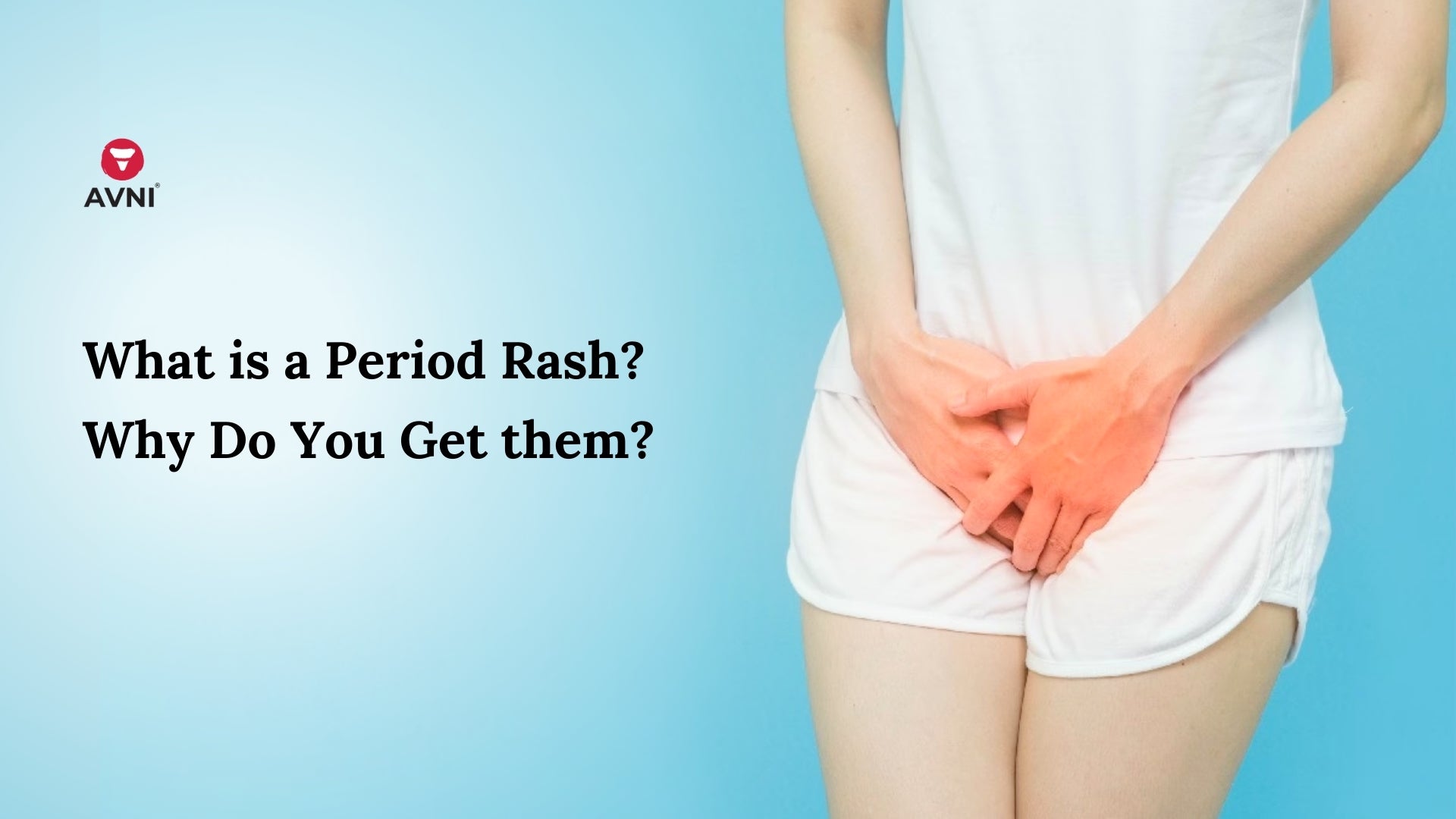
Reusable Sanitary Pads: How to Use and Care for Them
There is always time for new things and innovations. However, how about when old practices make a headway again but with a bigger and better impact? Such is the story of the humble reusable pad, which was earlier, quite conveniently replaced by the disposable ones.
While disposable pads gave a lot of working women in the 1930’s (that’s when it was invented), a lot of flexibility and freedom of movement, almost a century later, they are one of the biggest contributors of carbon footprint across the world.
Reusable sanitary pads are repeating the history, but in a good and hygienic way, peppered with comfort and convenience.
If you are considering switching to a reusable natural pad or have already made the decision and looking for some friendly advice, we are here to help you!
In this blog, we will elucidate on what are reusable sanitary pads, how they are made, how to use and clean them, and so on.
What are Reusable Sanitary Pads Made of?
Avni Fluff antimicrobial reusable cloth pad is a unique blend of engineered fabrics for maximum comfort, absorbency and convenience. India’s first 100% dry feel antimicrobial reusable cloth pad, the Avni Fluff can last up to 3 years.
The top layer is made for rapid dryness while the middle layer comprises the ultra absorbent performance fabric that offers 8+ hours protection. The bottom later is PU laminated leak proof layer perfectly complementing the SmartGRIPshape for the best fit.
Most reusable pads are also made of bamboo sheets and other absorbent materials that make it easier for the pads to be sustainable and period-friendly as well. The best part about the Avni Fluff? It is handcrafted by women belonging to empowerment projects.
How to Use, Wash, and Care for Your Reusable Sanitary Pads?
We understand that switching to a reusable pad might be a little overwhelming, especially with a switch in usage and the whole routine behind it that was earlier only to dispose of the used pad.
First time users often ask us about washing and caring for their reusable sanitary pads. We have jotted down a step by step that should help you get started.
Step 1: Soak in Cold Water
Soaking the soiled reusable sanitary pad in cold water is very important for extracting all the blood and extra materials. Please do not use hot water to soak the pads as it will set the stain in. Allow the pad to soak up the cold water for 30 mins.
Step 2: Face Downwards
Soaking the reusable pad facing downwards reinforces the washing process. This is a good idea because the blood tends to flow out into the water as it soaks up instead of setting the pad in deep when placed the opposite way.
Step 3: Rinsing
Once the extra blood has ‘fallen’ out of the pad, it is time for some elbow grease - or not! Use natural soap and scrub the pad clean. Do not use a brush as it can affect the normal texture of the pad. Rinse it with cold water and again, give the hot water a miss.
Step 4: Get in Shape
Water can change the shape of your natural sanitary pad. Therefore, it is important to stretch it back into shape, while wet. This helps it maintain its form, as well as avoid shrinking of the cotton.
Step 5: Drying
Thoroughly drying your sanitary pad is absolutely essential. The best way is to line dry, under the natural sunlight. It not only helps dry the pad, but it's also a great antibacterial and leaves the pad smelling fresh and clean. In case sunlight is scarce in your region, your best bet is tumble dry and then airing it out before packing it away.
Step 6: Storing
Once the reusable sanitary pad is completely dry, do not fold and store them. Storing them flat helps them retain their shape. If your periods are over, then you can store them away in a breathable bag until next time.

Additional Tips for the Extra Clean Reusable Sanitary Pads
There is always something extra you can do to make sure that your reusable sanitary pad is clean and fresh for a longer time.
Lucky for you, we have a few hacks up our sleeves, just for you!
Essential Oils: Adding a few drops of essential oil to the water as you wash for the sweet lingering smell. Few oils that you can use are Eucalyptus, rose or lavender.
Add a dash of baking soda: Not to be confused with baking powder, spot dabbing baking soda can help remove those tough stains that won’t go by simple wash routine.
Use foldable pads: This is more for traveling than washing but having a reusable pad that can fold in a pack or pocket conveniently is perfect for a woman on the go!
At the end of the day, it is important to find a washing routine that suits you and can stick to as well. You can up your sustainability game by further using eco-friendly wash and intimate care products.

What You Should NOT DO While Washing Your Reusable Sanitary Pads
Use fabric softeners and bleaches: Softeners and bleaches can limit the ability of the cotton layer’s absorbency.
Using too much detergent: Using too much detergent might leave residue on the pad that can not only affect the absorption ability but also make the vaginal area prone to rashes and discomfort.
Using vinegar: The acidic elements of vinegar can be a bit too harsh on the soft cotton layer. It might break down the fibers and affect the efficiency of the fabric.
Ironing the reusable sanitary pad: Ironing your reusable pad is a big no no as high temperature is likely to damage the fleece lining deployed while making the pads.

How do Reusable Sanitary Pads Actually Work?
Unlike the run-of-the mill conventional pads, reusable sanitary pads are more likely to be customized, suited for the user and not the other way round.
Reusable sanitary pads, much like the disposable counterparts are placed on top of the underwear. However, instead of sticking to the surface, these pads are buttoned to the garment.
Such sanitary pads are equipped with a cotton layered side, used to absorb blood and the opposite patterned side with buttons and their grooves to fasten around the crotch area.
Once in position, the pad can easily collect the blood, with zero hassles and leaks. These pads are designed for both light and heavy days.
What You Should Keep in Mind Before Buying Reusable Sanitary Pads
1. It is important to select a pad that works for your flow
You might be someone with heavy flow or light flow. Reusable pads are often categorically available to accommodate different types of flows. From very heavy to light flow, choosing the right pad is not only convenient but economical as well.
2. Understand that cleaning the reusable sanitary pad is now going to be a routine process
You need to chalk some time in the day to wash your reusable pads. If you don’t have the time or access to regularly clean your reusable pad, then it might be tricky for you. The first time you use and wash your reusable pads will be a learning process and it will be helpful in setting up a routine.
3. Reusable sanitary pads are great! However, keep natural pads for emergency situations
It is okay to hop from reusable pads to natural pads if it suits you and your lifestyle. For emergencies and on-the-go situations, having this option and flexibility will be helpful. You can also rotate between the two depending upon your flow and your work-life.
Save for a few changes, using reusable sanitary pads is a very convenient option for many.
Avni’s Fluff reusable sanitary pads are a recent addition to the sustainable and healthy range of period products, handcrafted with love. Made from top grade and natural materials, the Fluff pads are here to make your menstrual journey more natural, convenient and not to mention, sustainable.
FAQs
How long can you use reusable pads?
Depending upon your flow, you can determine how long each pad would last for you. However, usually, one reusable sanitary pad works for 6-7 hours. If used right, these pads can last for a good 3+ years!
How often do you need to change a reusable pad?
You can change the pad based on your flow but the usual time is around 6-7 hours.
Is it safe to use reusable sanitary pads?
It is definitely safe to use reusable sanitary pads since they are made from natural materials, devoid of any chemicals that can lead to any rashes. They are also great to avoid bacterial infestation or issues like the Toxic Shock Syndrome.
How do you wash and care for reusable sanitary pads?
Use natural soap and cold water for the process. Soak these soiled pad facing downwards in cold water for 30 mins and rinse the pad with natural period wash until clean. Stretch it back to shape and let it dry naturally under the sun.
How do I find the right reusable sanitary pad?
A lot of it depends upon the flow and your lifestyle. A little trial and error at the beginning of your journey can help determine which reusable sanitary pad is best fit for you.
What is the difference between reusable and disposable pads?
These are ‘reusable’ pads, made of eco-friendly materials that have zero impact on the body and the environment. They are fairly economical, considering they can be reused and if used right, do not cause any rashes or burns.
Do reusable sanitary pads have any odour?
Interestingly, reusable sanitary pads tend to be fresher for longer than their disposable counterparts, considering they have been manufactured using environmentally friendly materials, minus any chemicals.
Can I use reusable cloth pads after giving birth?
Absolutely! Cloth pads are a great option for postpartum periods - the right choice in this case are the thick overnight pads. Many new mothers choose to soak their pads in soothing materials like aloe vera gel and freeze them to comfort their rather tender vaginal regions.
Can teenagers use a reusable sanitary pad?
Teenagers can definitely make the early switch or start their menstrual journeys with reusable sanitary pads. Some brands also offer my period kit to help newbies join the bandwagon. Starting early with cloth pads can help teenagers understand the process behind it and appreciate the sustainability factor.



Leave a comment
This site is protected by hCaptcha and the hCaptcha Privacy Policy and Terms of Service apply.